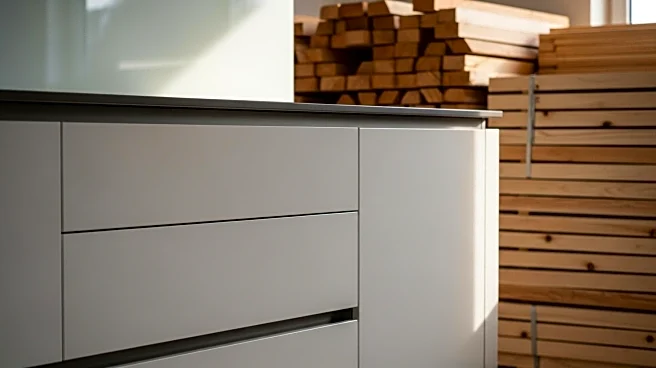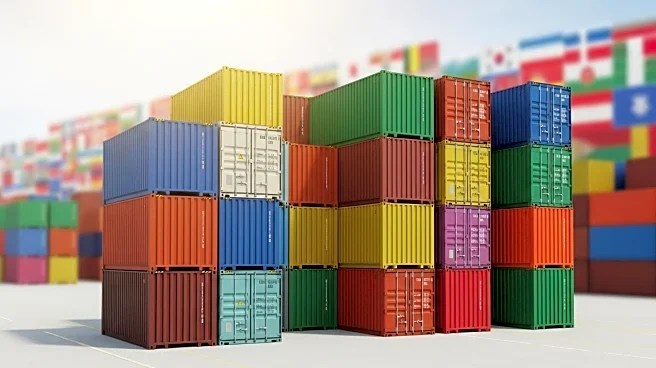What's Happening?
The Trump administration has implemented new tariffs on imported furniture, kitchen cabinets, and lumber, with rates ranging from 10% to 50%. These measures are intended to protect U.S. manufacturing and prevent
foreign products from overwhelming the domestic market. While the administration claims that foreign exporters will bear the cost, economists suggest that American consumers and businesses will absorb most of the added expenses. The tariffs are expected to increase prices for consumers, particularly those involved in home building or remodeling.
Why It's Important?
The tariffs could lead to higher costs for consumers and businesses, affecting the housing and furniture markets. While intended to boost domestic manufacturing, the tariffs may result in increased prices for imported goods, impacting consumer spending and potentially slowing economic growth. The situation highlights the complex dynamics of trade policies and their effects on various economic stakeholders.
What's Next?
As companies adjust to the new tariffs, there may be shifts in supply chains, with some businesses considering onshoring production to mitigate costs. The full impact of the tariffs on the economy remains uncertain, with potential long-term effects on consumer prices and manufacturing competitiveness.
Beyond the Headlines
The tariffs reflect broader trade policy strategies aimed at reshaping global trade dynamics. They also raise questions about the balance between protecting domestic industries and maintaining affordable consumer prices.











